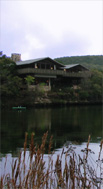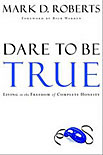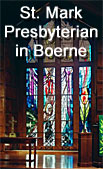« Ancient Ephesus and the New Testament: Introduction | Home | Touring Ancient Ephesus »
The Location and Environment of Ephesus
By Mark D. Roberts | Tuesday, August 7, 2007
Part 1 of series: Ancient Ephesus and the New Testament
Permalink for this post / Permalink for this series
 Ephesus, or what is left of it, lies on the western edge of modern day Turkey, just about five miles inland from the Aegean coast. The picture to the right shows the location of Ephesus. It is close to the modern town of Selcuk. Most tourists visit Ephesus by way of the port city of Kusadasi, which is about a 45-minute drive from Ephesus. The countryside between these two cities is fertile, lush with agriculture. It reminded me of farmlands inland from San Diego, California.
Ephesus, or what is left of it, lies on the western edge of modern day Turkey, just about five miles inland from the Aegean coast. The picture to the right shows the location of Ephesus. It is close to the modern town of Selcuk. Most tourists visit Ephesus by way of the port city of Kusadasi, which is about a 45-minute drive from Ephesus. The countryside between these two cities is fertile, lush with agriculture. It reminded me of farmlands inland from San Diego, California.
 Given the current location of Ephesus, you might be surprised to learn that it was once a major port city. No, Ephesus didn’t move, or not much, anyway. Ancient cities did tend to move around a bit. When a city burned down, they’d rebuild it nearby. Ephesus was no exception. But it wasn’t a change of location that made Ephesus a port city. Rather, it was the changing shoreline. In ancient times, Ephesus had a harbor, such that the city went right up to the water. But sediment from the Cayster River eventually filled in the harbor. (The photo to the right shows the location of the ancient harbor.)
Given the current location of Ephesus, you might be surprised to learn that it was once a major port city. No, Ephesus didn’t move, or not much, anyway. Ancient cities did tend to move around a bit. When a city burned down, they’d rebuild it nearby. Ephesus was no exception. But it wasn’t a change of location that made Ephesus a port city. Rather, it was the changing shoreline. In ancient times, Ephesus had a harbor, such that the city went right up to the water. But sediment from the Cayster River eventually filled in the harbor. (The photo to the right shows the location of the ancient harbor.)
 Ephesus itself lies in a valley. It is protected by steep hills on either side. In days gone by, this would have helped to guard the city from enemy attack. The valley also adds to the beauty of the location, even today. (In the photo to the right, Ephesus lies on the other side of the two low hills in the middle of the picture, and at the bottom of the larger hill in the background.)
Ephesus itself lies in a valley. It is protected by steep hills on either side. In days gone by, this would have helped to guard the city from enemy attack. The valley also adds to the beauty of the location, even today. (In the photo to the right, Ephesus lies on the other side of the two low hills in the middle of the picture, and at the bottom of the larger hill in the background.)
One of the most famous of Ephesus’s ancient structures, the Temple of Artemis, was not located in the center of the city as it was found in Roman times. Rather, the Artemision was a mile or so out of town. All that remains of the temple is a single pillar, which lies just to the left of the center of the picture to the right.
Tomorrow I’ll talk about tours of Ephesus and start in on my online photo tour.
Topics: Archeology and the Bible |
Comments
Thanks for your willingness to make a comment. Note: I do not moderate comments before they are posted, though they are automatically screened for profanities, spam, etc., and sometimes the screening program holds comments for moderation even though they're not offensive. I encourage open dialogue and serious disagreement, and am always willing to learn from my mistakes. I will not delete comments unless they are extraordinarily rude or irrelevant to the topic at hand. You do need to login in order to make a comment, because this cuts down on spam. You are free to use a nickname if you wish. Finally, I will eventually read all comments, but I don't have the time to respond to them on a consistent basis because I've got a few other demands on my time, like my "day job," my family, sleep, etc.
You must be logged in to post a comment.














